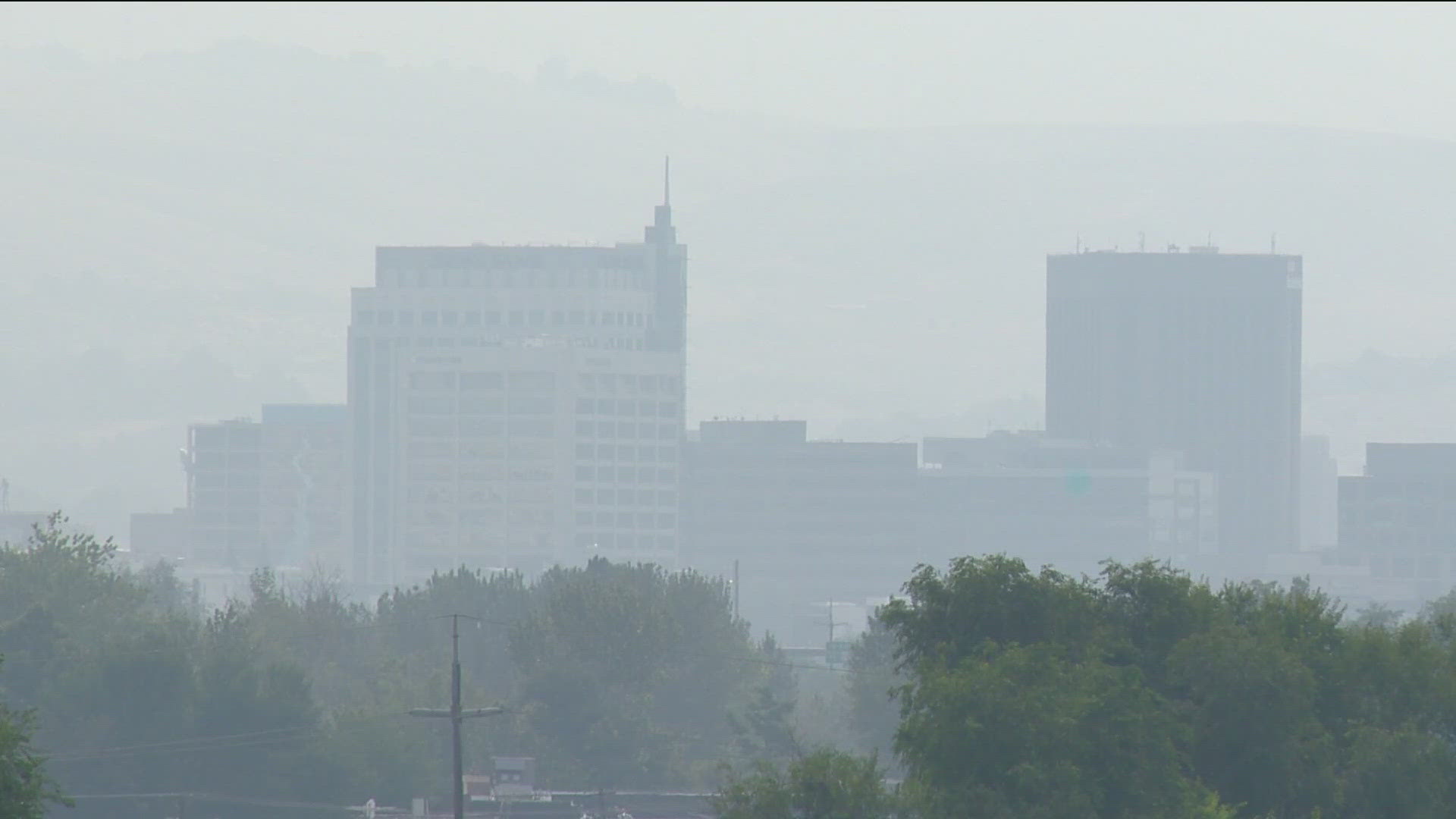BOISE, Idaho — Parts of Southern Idaho are getting a short-lived break from the wildfire smoke on Tuesday, as the blue sky slightly appears. But, fire activity continues to be very high.
The National Interagency Fire Center data shows that in 2024, we're outpacing other active years, such as 2020 and 2021. In those years, smoke was an issue until September and October. So, it's likely smoke will be an issue for months to come.
Wildfire smoke and the resulting poor air quality can significantly affect our daily routine when concentrations are high. Leading many people to ask, "Should I still go ahead with my plans today?"
Dr. Luke Montrose aimed to help answer that question, "So I think one of the things that we as a field are trying to get people to do is to think about air quality the same way we think about rain. You wouldn't plan a barbecue if you knew there was a rainstorm coming. And similarly, you should plan your day around the air quality."
Dr. Montrose studies Environmental Toxicology at Colorado State University. He previously worked at Boise State. His primary research focuses on the negative health effects of wildfire smoke exposure.
When trying to decide what your activity level should be, Dr. Montrose suggests taking your individual health into consideration, "Do you have a cold, or do you have asthma, COPD....And so thinking about what your personal risk tolerance is has to do with your your vulnerability and your sensitivity."
"And then also, what are you willing to gamble with if you're a younger individual, and you don't have any of those comorbidities. You might be you might make the calculation that it's better for it's better for your physical health to exercise outside on a yellow (moderate air quality) day than it is to stay inside and not exercise," he said.
He continued and said, "That particularly becomes a tricky situation if it's a 10 or a 15-day period where we're impacted by wildfire smoke. At some point you can imagine that the scale tips a bit where you say it probably would be better for me to go out and exercise than to stay sedentary."
Dr. Montrose stated exercise is something that could increase the amount of smoke you're exposed to, "When you exercise, you're actually raising your heart rate and your respiration rate. So not only are you breathing in those particles, you're likely breathing in more volume and forcing them deeper into your lungs."
He said air quality monitoring devices are getting less expensive, so it could be a good investment. He carries one of these devices in his backpack in the summer so he can monitor the air quality around him in real time.
Dr. Montrose also said it is important to consider how smoke can enter your house. He suggests sealing any cracks or crevices in windows or doors, getting an inexpensive air purifier, and upgrading your HVAC filter.
He explained you can also make your own air filter that works "pretty darn well" in a pinch. This is called a "Corsi box", if you want to try and make one, you can look it up on YouTube.
Wildfire smoke is not new to the Northwest but, the amount of it and consistency of it is increasing.
"When we describe the recent wildfire landscape, what we normally talk about is a three decade period when we really started to see a ramp up of wildfire activity," explained Dr. Montrose.
Montrose added it's not the number of wildfires that's changing but the amount of acres burned, "Over the last three decades, there's been essentially a doubling each decade of acres burned. That's definitely a trend and it looks like it's not slowing down. If anything, it's increasing in its pace."
While we know more acres are burning, Dr. Montrose said the impact of the smoke to people is not fully understood, "We have very limited idea of what being exposed long term actually means.
"When wildfire came onto the scene, it was a single event, fairly rare. That's now changing because it's no longer rare to be exposed. Now, we're being exposed to what I would call episodically, so these sort of longer-term events can last weeks or months, and then these occur year over year."
Dr. Montrose and some of his colleagues created a call to action for researchers to consider this shift, thinking of smoke as a long term exposure versus the short term.
Dr. Montrose's previous research includes a study showing wildfire smoke permeated the indoor space of long term care facilities in Idaho. You can read more about that here.

